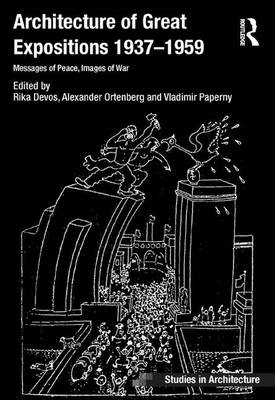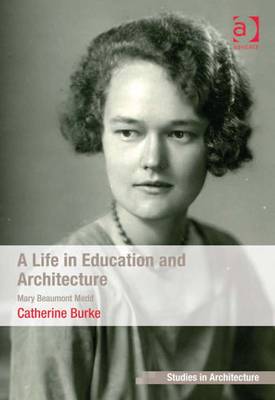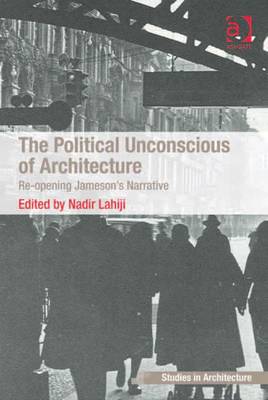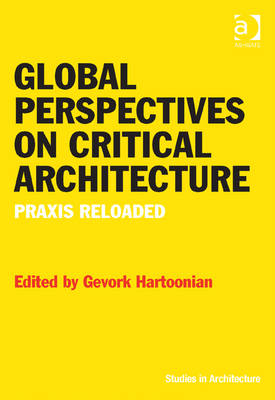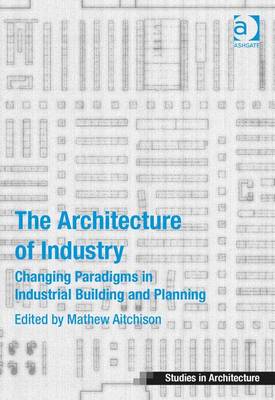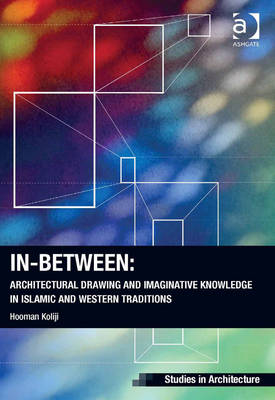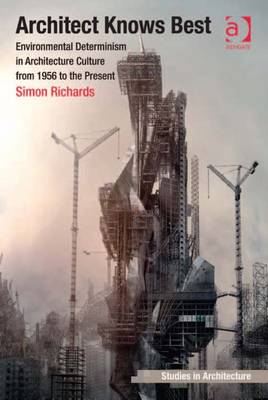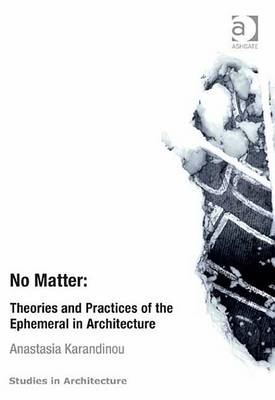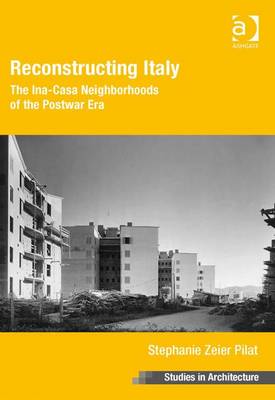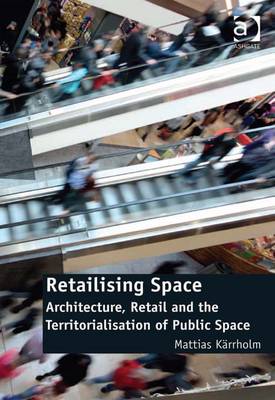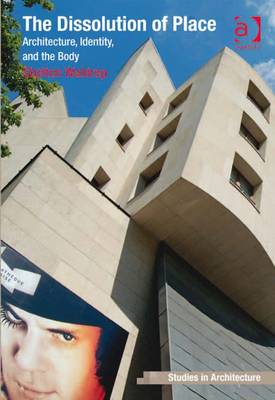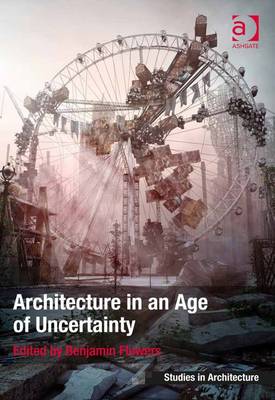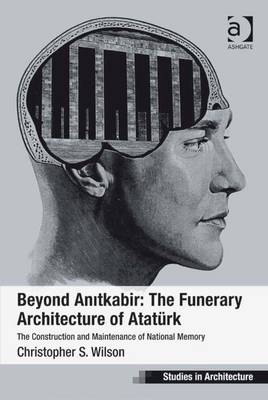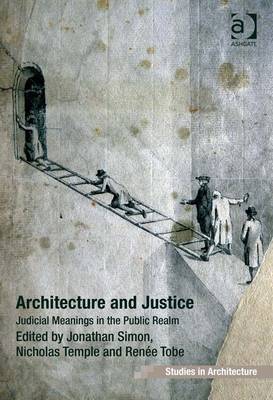Ashgate Studies in Architecture
17 total works
Architecture of Great Expositions 1937-1959
by Rika Devos and Dr. Alexander Ortenberg
This book provides a detailed exploration of the relationships between individual architects, educators, artists and designers that laid the foundation and shaped the approach to designing new school buildings in post-war Britain. It explores the life and work of Mary Medd (nee Crowley) (1907-2005) who was alongside her husband and professional partner, David Medd, one of the most important modernist architects of the 20th century.
Mary Medd devoted the major part of her career to the design of school buildings and was pioneering in this respect, drawing much inspiration from Scandinavian architecture, arts and design. More than a biography, the book draws attention to the significance of relationships and networks of friendships built up over these years among individuals with a common view of the child in educational settings.
The Political Unconscious of Architecture
Thirty years have passed since eminent cultural and literary critic Fredric Jameson wrote his classic work, The Political Unconscious: Narrative as a Socially Symbolic Act, in which he insisted that 'there is nothing that is not social and historical - indeed, that everything is "in the last analysis" political'.
Bringing together a team of leading scholars including Slavoj A1/2iA3/4ek, Joan Ockman, Jane Rendell, and Kojin Karatani, this book critically examines the important contribution made by Jameson to the radical critique of architecture over this period, highlighting its continued importance to contemporary architecture discourse.
Jameson's notion of the 'political unconscious' represents one of the most powerful notions in the link between aesthetics and politics in contemporary discourse. Taking this, along with other key concepts from Jameson, as the basis for its chapters, this anthology asks questions such as: Is architecture a place to stage 'class struggle'?, How can architecture act against the conditions that 'affirmatively' produce it? What does 'the critical', and 'the negative', mean in the discourse of architecture? and, How do we prevent architecture from participating in the reproduction of the cultural logic of late capitalism?
This book breaks new ground in architectural criticism and offers insights into the interrelationships between politics, culture, space, and architecture and, in doing so, it acts as a counter-balast to the current trend in architectural research where a general aestheticization dominates the discourse.
Global Perspectives on Critical Architecture
Judging from the debates taking place in both education and practice, it appears that architecture is deeply in crisis. New design and production techniques, together with the globalization of capital and even skilled-labour, have reduced architecture to a commodified object, its aesthetic qualities tapping into the current pervasive desire for the spectacular. These developments have changed the architect's role in the design and production processes of architecture.
Moreover, critical architectural theories, including those of Breton, Heidegger and Benjamin, which explored the concepts of technology, modernism, labour and capital and how technology informed the cultural, along with later theories from the 1960s, which focused more on the architect's theorization of his/her own design strategies, seem increasingly irrelevant. In an age of digital reproduction and commodification, these theoretical approaches need to be reassessed. Bringing together essays and interviews from leading scholars such as Kenneth Frampton, Peggy Deamer, Bernard Tschumi, Donald Kunze and Marco Biraghi, this volume investigates and critically addresses various dimensions of the present crisis of architecture. It poses questions such as: Is architecture a conservative cultural product servicing a given producer/consumer system? Should architecture's affiliative ties with capitalism be subjected to a measure of criticism that can be expanded to the entirety of the cultural realm? Is architecture's infusion into the cultural the reason for the visibility of architecture today? What room does the city leave for architecture beyond the present delirium of spectacle? Should the thematic of various New Left criticisms of capitalism be taken as the premise of architectural criticism? Or alternatively, putting the notion of criticality aside is it enough to confine criticism to the production of insightful and pleasurable texts?
The Architecture of Industry
From the Rust Belt to Silicon Valley, the intersection between architecture and industry has provided a rich and evolving source for historians of architecture. In a historical context, industrial architecture evokes the smoking factories of the nineteenth century or Fordist production complexes of the twentieth century. This book documents the changing nature of industrial building and planning from the end of the nineteenth century to the beginning of the twenty-first century. Drawing on research from the United States, Europe and Australia, this collection of essays highlights key moments in industrial architecture and planning representative of the wider paradigms in the field. Areas of analysis include industrial production, factories, hydroelectricity, aerospace, logistics, finance, scientific research and mining. The selected case studies serve to highlight architectural and planning innovations in industry and their contributions to wider cultural and societal currents. This richly illustrated collection will be of interest for a wide range of built environment studies, incorporating findings from both historical and theoretical scholarship and design research.
In-Between: Architectural Drawing and Imaginative Knowledge in Islamic and Western Traditions
by Hooman Koliji
Contemporary technical architectural drawings, in establishing a direct relationship between the drawing and its object, tend to privilege the visible physical world at the expense of the invisible intangible ideas and concepts, including that of the designer's imagination. As a result, drawing may become a utilitarian tool for documentation, devoid of any meaningful value in terms of a kind of knowledge that could potentially link the visible and invisible. This book argues that design drawings should be recognized as intermediaries, mediating between the world of ideas and the world of things, spanning the intangible and tangible.
The notion of the 'Imaginal' as an intermediary between the invisible and visible is discussed, showing how architectural drawings lend themselves to this notion by performing as creative agents contributing not only to the physical world but also penetrating the realm of concepts. The book argues that this 'in-between' quality to architectural drawing is essential and that it is critical to perceive drawings as subtle bodies that hold physical attributes (for example, form, proportion, color), highly evocative, yet with no matter. Focusing on Islamic geometric architectural drawings, both historical and contemporary, it draws on key philosophical and conceptual notions of imagination from the Islamic tradition as these relate to the creative act. In doing so, this book not only makes important insights into the design process and act of architectural representation, but more broadly it adds to debates on philosophies of the imagination, linking both Western and Islamic traditions.
The idea that buildings could be used to reform human behaviour and improve society was fundamental to the 'modernist' architecture and planning of people like Walter Gropius, Le Corbusier and Jose Luis Sert in the first half of the 20th century. Their proposals for functional zoning, multi-level transport, high-rise living, and machine-inspired aesthetics came under attack from the 1950s onwards, and many alternative approaches to architecture and planning emerged. It was thought that the environmental determinist strand of the discourse was killed off at this time as well.
This book argues that it was not, but on the contrary, that it has deepened and diversified. Many of the most prominent architect-planners continue to design with a view to improving the behaviour of individual people and of society at large. By looking at - and interviewing - major figures and movements of recent years in Britain, Europe and America, including Leon Krier, Peter Eisenman, Andres Duany, Jane Jacobs, Robert Venturi and Denise Scott Brown, it demonstrates the myriad ways that architect-planners seek to shape human behaviour through buildings.
In doing so, the book raises awareness of this strand within the discourse and examines its different purposes and manifestations. It questions whether it is an ineradicable and beneficial part of architecture and planning, or a regrettable throwback to a more authoritarian phase, discusses why is it seldom acknowledged directly and whether it could be handled more responsibly and with greater understanding. Richards does not provide any simple solutions but in conclusion, is critical of architect-planners who abuse the rhetoric of social reform simply to leverage their attempts to secure building commissions, while being more sympathetic towards those who appear to have a sincere desire to improve society through their buildings.
No Matter: Theories and Practices of the Ephemeral in Architecture
by Anastasia Karandinou
How do digital media (mobile phones, GPS, iPods, portable computers, internet, virtual realities, etc.) affect the way we perceive, inhabit and design space? Why do architects traditionally design, draw and map the visual, as opposed to other types of sensations of space (the sound, the smell, the texture, etc.)? Architecture is not only about the solid, material elements of space; it is also about the invisible, immaterial, intangible elements of space. This book examines the design, representation and reception of the ephemeral in architecture. It discusses how architects map and examine the spatial qualities that these elements create and questions whether - and if so, how - they take them into account in the designing process.
Karandinou argues that current interest in the ephemeral in contemporary culture and architecture is related to the evolution of digital media; and that it is related to the new ways of thinking about space and everyday situations that new media enables. With sound and video recording devices now being embedded in everyday gadgets and mobile phones, capturing sounds or ephemeral situations and events has become an everyday habit. New animation techniques allow designers to think about space through time, as they are able to design dynamic and responsive spaces, as well as static spaces explored by someone over time. Contemporary video games are no longer based on a simple visual input and a keyboard; they now involve other senses, movement, and the response of the whole body in space. This book therefore argues that the traditional binary opposition between the sensuous and the digital is currently being reversed.
Subsequently, new media can also function as a new tool-to-think-with about space. Designers are now able to think through time, and design spaces accordingly. Time, temporality, ephemerality, become central issues in the designing process. The notion first claimed by Marshall McLuhan in the 1960s, that the emergence of new digital media caused a `shift in the sensorium', is more relevant than ever, and can be expanded in order to accommodate the new emerging technologies. Through analysis of theoretical concepts, design case studies, and real-life observations, this book challenges and inspires architects, theorists, researchers and students both about the above-mentioned series of questions, and also about possible methodologies for addressing them.
Reconstructing Italy traces the postwar transformation of the Italian nation through an analysis of the Ina-Casa plan for working class housing, established in 1949 to address the employment and housing crises. Government sponsored housing programs undertaken after WWII have often been criticized as experiments that created more social problems than they solved. The neighborhoods of Ina-Casa stand out in contrast to their contemporaries both in terms of design and outcome. Unlike modernist high-rise housing projects of the period, Ina-Casa neighborhoods are picturesque and human-scaled and incorporate local construction materials and methods resulting in a rich aesthetic diversity. And unlike many other government forays into housing undertaken during this period, the Ina-Casa plan was, on the whole, successful: the neighborhoods are still lively and cohesive communities today. This book examines what made Ina-Casa a success among so many failed housing experiments, focusing on the tenuous balance struck between the legislation governing Ina-Casa, the architects who led the Ina-Casa administration, the theory of design that guided architects working on the plan, and an analysis of the results-the neighborhoods and homes constructed.
Drawing on the writings of the architects, government documents, and including brief passages from works of neorealist literature and descriptions of neorealist films by Pier Paolo Pasolini, Italo Calvino and others, this book presents a portrait of the postwar struggle to define a post-Fascist Italy.
As Ruskin suggests in his Seven Lamps of Architecture: "We may live without [architecture], and worship without her, but we cannot remember without her." We remember best when we experience an event in a place. But what happens when we leave that place, or that place no longer exists? This book addresses the relationship between memory and place and asks how architecture captures and triggers memory. It explores how architecture exists as a material object and how it registers as a place that we come to remember beyond the physical site itself.
It questions what architecture is in the broadest sense, assuming that it is not simply buildings. Rather, architecture is considered to be the mapping of physical, mental or emotional space. The idea that we are all architects in some measure - as we actively organize and select pathways and markers within space - is central to this book's premise. Each chapter provides a different example of the manifold ways in which the physical place of architecture is curated by the architecture in our "mental" space: our imaginary toolbox when we think of a place and look at a photograph, or visit a site and describe it later or send a postcard.
By connecting architecture with other disciplines such as geography, visual culture, sociology, and urban studies, as well as the fine and performing arts, this book puts forward the idea that a conversation about architecture is not exclusively about formal, isolated buildings, but instead must be deepened and broadened as spatialized visualizations and experiences of place.
New animation techniques allow designers to think about space through time, as they are able to design dynamic and responsive spaces, as well as static spaces explored by someone over time. Contemporary video games are no longer based on a simple visual input and a keyboard; they now involve other senses, movement, and the response of the whole body in space. This book therefore argues that the traditional binary opposition between the sensuous and the digital is currently being reversed. Subsequently, new media can also function as a new tool-to-think-with about space. Designers are now able to think through time, and design spaces accordingly. Time, temporality, ephemerality, become central issues in the designing process. The notion first claimed by Marshall McLuhan in the 1960s, that the emergence of new digital media caused a 'shift in the sensorium', is more relevant than ever, and can be expanded in order to accommodate the new emerging technologies.
Through analysis of theoretical concepts, design case studies, and real-life observations, this book challenges and inspires architects, theorists, researchers and students both about the above-mentioned series of questions, and also about possible methodologies for addressing them.
Over the past few years there has been a proliferation of new kinds of retail space. Retail space has cropped up just about everywhere in the urban landscape: in libraries, workplaces, churches and museums. In short, retail is becoming a more and more manifest part of the public domain. The traditional spaces of retail, such as city centres and outlying shopping malls, are either increasing in size or disappearing, producing new urban types and whole environments totally dedicated to retail. The creation of these new retail spaces has brought about a re- and de-territorialisation of urban public space, and has also led to transformations in urban design and type of materials used, and even in the logic and ways through which these design amenities meet the needs of retailers and/or consumers.
This book describes how the retailisation of public domains affects our everyday life and our use of the built environment. Taking an architectural and territorial perspective on this issue, it looks specifically at how retail and consumption spaces have changed and territorialised urban life in different ways. It then develops a methodology and a set of concepts to describe and understand the role of architecture in these territorial transformations.
Postmodern architecture - with its return to ornamentality, historical quotation, and low-culture kitsch - has long been seen as a critical and popular anodyne to the worst aspects of modernist architecture: glass boxes built in urban locales as so many interchangeable, generic anti-architectural cubes and slabs.
This book extends this debate beyond the modernist/postmodernist rivalry to situate postmodernism as an already superseded concept that has been upended by deconstructionist and virtual architecture as well as the continued turn toward the use of theming in much new public and corporate space. It investigates architecture on the margins of postmodernism -- those places where both architecture and postmodernism begin to break down and to reveal new forms and new relationships. The book examines in detail not only a wide range of architectural phenomena such as theme parks, casinos, specific modernist and postmodernist buildings, but also interrogates architecture in relation to identity, specifically Native American and gay male identities, as they are reflected in new notions of the built environment.
In dealing specifically with the intersection between postmodern architecture and virtual and filmic definitions of space, as well as with theming, and gender and racial identities, this book provides provides ground-breaking insights not only into postmodern architecture, but into spatial thinking in general.
The City Crown by Bruno Taut
This book is the first English translation of the German architect Bruno Taut's early twentieth-century anthology Die Stadtkrone (The City Crown). Written under the influence of World War I, Taut developed The City Crown to promote a utopian urban concept where people would live in a garden city of `apolitical socialism' and peaceful collaboration around a single purpose-free crystalline structure. Taut's proposal sought to advance the garden city idea of Ebenezer Howard and rural aesthetic of Camillo Sitte's urban planning schemes by merging them with his own `city crown' concept. The book also contains contributions by the Expressionist poet Paul Scheerbart, the writer and politician Erich Baron and the architectural critic Adolf Behne.
Although the original German text was republished in 2002, only the title essay of The City Crown has previously been translated into English. This English translation of Taut's full anthology, complete with all illustrations and supplementary texts, fills a significant gap in the literature on early modern architecture in Germany and the history of urban design. It includes a translators' preface, introduction and afterword to accompany the original composition of essays, poems, designs and images. These original texts are accompanied by illustrations of Taut's own designs for a utopian garden city of 300,000 inhabitants and over 40 additional historic and contemporary examples.
The new preface to The City Crown explains the premise for the English translation of Taut's anthology, its organization and the approaches taken by the translators to maintain the four different voices included in the original work.
Matthew Mindrup's introduction critically examines the professional and intellectual developments leading up to and supporting Bruno Taut's proposal to advance the English garden city concept with a centralized communal structure of glass, the city crown. Through the careful examination of original documents, letter conversations and previous scholarship, Mindrup locates crucial sources and provides insights into the reasons behind Taut's thesis. Where previous scholarship has sought to ascribe a single source for Taut's `city crown' concept to such diverse architectural and spiritual leaders as Fischer, Landauer, Nietzsche and Eckhart, Mindrup argues that it evolved in a more complex way. During the months immediately following the end of World War I, The City Crown proved a source of inspiration for Taut and his colleagues in the Arbeitsrat fur Kunst (Working Council for Art) who were seeking to develop a new post-war German architecture.
Ulrike Altenmuller-Lewis and Mark Brack's afterword introduces the English reader to Bruno Taut's life and career. The City Crown can be seen as turning point where Taut's social and spiritual agendas became fully equal to the pragmatic and aesthetic impulses found in his work. The text also introduces the reader to more recent (and largely German) research on Taut. These reconsiderations of Taut's theoretical work and personal development provide a fuller understanding of The City Crown's impact on Taut's career while placing the text more inclusively within the cultural landscape of the time.
Architecture in an Age of Uncertainty
In the past two decades economic bubbles inflated and architectural spending around the globe reached fever pitch. In both well-established centers of capital accumulation and far--flung locales, audacious building projects sprang up, while the skyscraper, heretofore more commonly associated with American capitalism, seemed as if it might pack up and relocate to Dubai and Shanghai.
Of course, much has changed in the past couple of years. In formerly free-spending Dubai, the tallest building in the world is now is named after the president of Abu Dhabi after he stepped in with last--minute debt financing. In cities across the United States, housing prices have nose-dived and cleared lots sit ready for commercial redevelopment that likely won't take place for another decade. Similar stories are not hard to find in many other nations. Architecture firms that swelled in flush days are jettisoning employees at a startling rate.
In the context of economic instability (and its attendant social and political consequences), this edited volume brings together scholars, critics, and architects to discuss the present state of uncertainty in the practice and discipline of architecture. The chapters are organized into three main areas of inquiry: economics, practice, and technology. Within this larger framework, authors explore issues of security, ecological design, disaster architecture, the future of architectural practice, and the ethical obligations of the social practice of design.
In doing so, it argues that this period has actually afforded architecture a valuable moment of self-reflection, where alternative directions for both the theory and practice of architecture might be explored rather than continuing with an approach which was so nurtured by capitalist prosperity and affluence.
Beyond Anitkabir: The Funerary Architecture of Ataturk
by Christopher Samuel Wilson
There have been five different settings that at one time or another have contained the dead body of Mustafa Kemal Ataturk, organizer of the Turkish War of Independence (1919-1923) and first president of the Republic of Turkey. Narrating the story of these different architectural constructions - the bedroom in Dolmabahce Palace, Istanbul, where he died; a temporary catafalque in this same palace; his funeral stage in Turkey's new capital Ankara; a temporary tomb in the Ankara Ethnographic Museum; and his permanent and monumental mausoleum in Ankara, known in Turkish as `Anitkabir' (Memorial Tomb) - this book also describes and interprets the movement of Ataturk's body through the cities of Istanbul and Ankara and also the nation of Turkey to reach these destinations.
It examines how each one of these locations - accidental, designed, temporary, permanent - has contributed in its own way to the construction of a Turkish national memory about Ataturk. Lastly, the two permanent constructions - the Dolmabahce Palace bedroom and Anitkabir - have changed in many ways since their first appearance in order to maintain this national memory. These changes are exposed to reveal a dynamic, rather than dull, impression of funerary architecture.
Architecture and Justice
by Dr. Renee Tobe, Professor Jonathan Simon, and Professor Nicholas Temple
Bringing together leading scholars in the fields of criminology, international law, philosophy and architectural history and theory, this book examines the interrelationships between architecture and justice, highlighting the provocative and curiously ambiguous juncture between the two. Illustrated by a range of disparate and diverse case studies, it draws out the formal language of justice, and extends the effects that architecture has on both the place of, and the individuals subject to, justice. With its multi-disciplinary perspective, the study serves as a platform on which to debate the relationships between the ceremonial, legalistic, administrative and penal aspects of justice, and the spaces that constitute their settings.
The structure of the book develops from the particular to the universal, from local situations to the larger city, and thereby examines the role that architecture and urban space play in the deliberations of justice. At the same time, contributors to the volume remind us of the potential impact the built environment can have in undermining the proper juridical processes of a socio-political system. Hence, the book provides both wise counsel and warnings of the role of public/civic space in affirming our sense of a just or unjust society.
